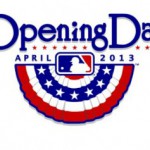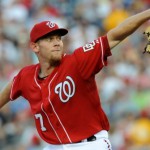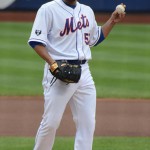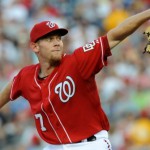First off, this is partly a post of self-flaggelation, to show how far off my various predictions of what the 2013 minor league staffs would look like by doing 2012 season-ending analysis. Such is the nature of minor league pitching staffs in the modern day; they’re a combination of spare parts, rising stars and hangers-on and they can change rapidly with trades and spring training performances. Every trade and every MLFA signing trickles down and fouls up predicitons.
Here’s my End of Season 2012 post with predictions for each of the 2013 minor league pitching staffs. We’ll use that as a basis for the Opening Day 2013 rosters of the four full-season minor league teams. Just for fun we’ll throw in (and start with) the MLB prediction. Note that this early in the season we don’t really know who’s shaking out as starters and relievers necessarily for these minor league teams; i’m just going on first week usage right now. As always, Luke Erickson and nationalsprospects.com, the Nats Big Board and the tireless work by “SpringfieldFan” is much appreciated here.
MLB Nov 2012 Prediction
- MLB Rotation: Strasburg, Gonzalez, Zimmermann, Detwiler, FA or other acquisition
- MLB Bullpen: Clippard, Storen, Mattheus, Stammen, Garcia, a FA left-hander (possibly Burnett), a FA long-man (possibly Gorzelanny).
- MLB notables Out of Organization: Jackson, Burnett, Gonzalez, Lannan, Wang
MLB April 2013 Actual
- MLB Rotation: Strasburg, Gonzalez, Zimmermann, Detwiler, Haren
- MLB Bullpen: Clippard, Storen, Mattheus, Stammen, Duke, Rodriguez, Soriano
- MLB notables Out of Organization: Jackson, Burnett, Gonzalez, Lannan, Wang, Gorzelanny
MLB Discussion: It wasn’t going to be that difficult to predict the 2013 Nats pitching staff make-up by looking at our staff and their FA status heading into the off-season. The rotation filled its one spot with Dan Haren. The bullpen was 5/7ths predicted correctly (if you count Zach Duke as a FA left-hander acquisition). Christian Garcia‘s injury opened the door for one more season of Henry Rodriguez, and of course nobody could have predicted the Rafael Soriano purchase. Lastly all 5 of the predicted departures occured, in addition to Tom Gorzelanny being let go.
AAA Nov 2012 Prediction
- AAA Rotation: Roark, Maya, Broderick, Meyers, Perry
- AAA Bullpen: Tatusko (swingman), Arneson (swingman), Severino (loogy), Davis, Lehman, Nelo (closer), Martin, Mandel
AAA Apr 2013 Actual
- AAA Rotation: Ohlendorf, Roark, Maya,Perry, Rosenbaum ( eventually Young)
- AAA Bullpen: Tatusko, Mandel, Davis, McCoy, Crotta, Abad, Romero, Bramhall
- AAA D/L: Kimball, Bray, Meyers, Torra, West, Garcia (technically XLS), Accardo
- AAA cut/released/FA: HPena, Mann, Zinicola, Arneson, Atkins, Ballard
- AAA Missing: none
AAA Discussion
We were 3/5s correct on the rotation, and probably would have been 4/5ths right if Brad Meyers was healthy. Ross Ohlendorf and (eventually) Chris Young are new faces here, both being former MLB starters who are taking the Zach Duke route of signing on for full seasons as AAA starter insurance for the big club in the hopes of rebuilding value and finding a MLB job for next year. Brian Broderick is indeed back; its just that he’s starting for AA instead of AAA. Lastly Danny Rosenbaum was returned to the team after his spring Rule-5 adventure and was put in AAA instead of AA, where (as we’ll see in a second) I would have predicted he would start. Once Young is ready to go, I see Tanner Roark turning into the swingman/long-man.
On the bright side (pun intended), when was the last time a professional baseball team had TWO Ivy League alumni pitching in its rotation?? Both Young and Ohlendorf went to Princeton. I wonder if they have NYTimes crossword puzzle competitions instead of (assumedly) video game competitions on off-days in the clubhouse.
As far as bullpen predictions go, next year I’m paying more close attention to who are 6-year free agents. Arneson, Severino and Nelo were all MLFAs and have either signed on elsewhere or are facing forced retirement. Tatusko, Davis and Mandel are onboard. Lehman is (surprisingly?) in AA, perhaps a victim of the numbers game of the Nats signing (and keeping) a number of minor league lefty relievers this off-season. I would guess, looking at the names in the bullpen, that Erik Davis is the closer but who knows what the usage will be like. Lastly Bramhall was a MLFA signing over the off-season who just got placed on the AAA roster to replace the injured Accardo.
AA Nov 2012 Prediction
- AA Rotation: Rosenbaum, Holder, Gilliam, Karns, Grace, Demny (swingman?) or MLFA? Solis if he’s healthy?
- AA Bullpen: Frias, McCoy, Selik (maybe high-A again), Holland (setup), Wort (closer), VanAllen (loogy), Demmin (maybe high-A again), an org arm or two to fill in.
AA Apr 2013 Actual
- AA Rotation: Broderick, Treinen, Demny, Clay, Karns
- AA Bullpen: Holder, Frias, Holland, Wort, Barrett, Krol, Lehman, Swynenberg
- AA D/L: Solis, RMartin, Olbrychowski, Selik
- AA Cut/released/FA: VanAllen
- AA Missing: none
AA Discussion
We got, well, not much of this right. Of my starter predictions: Rosenbaum is in AAA, Holder is here but seems to be the long-man right now, Gilliam is hurt, Solis is still on the DL, and Grace is back in High-A. We do seem to have at least gotten Karns and Demny right. Broderick was a surprise FA signing, his being a favorite of the Nats organziation per our Rule-5 experiment with him a couple years back. I’m surprised he’s not in the AAA rotation though. Treinen was a trade-throw in from the Morse deal and takes a spot in this rotation, while Clay was a 2013 MLFA signing who (surprisingly?) made the rotation over the likes of other candidates.
The bullen prediction is all over the place: We got Frias, Holland and Wort right. McCoy is in AAA, Selik is on the AA D/L and VanAllen and Demmin were MLFAs who were left unsigned (and per the big board are still unsigned). I thought Barrett and Swynenberg would be in high-A instead of AA, I (and most others) thought Lehman would be in AAA, and Krol arrived as the PTBNL in the Morse trade.
High-A Nov 2012 Prediction
- High-A Rotation: Swynenberg, Ray, Meyer (maybe AA?), Schwartz (maybe low-A), Rauh(maybe low-A)
- High-A Bullpen Competition: Barrett (maybe AA) , Testa, Smoker (loogy), Hill, Meza(perhaps a starter?), Holt, Hawkins, Bates, Mirowski
- High-A bullpen Release candidates: Olbrychowski, McCatty, Applebee
High-A Apr 2013 Actual
- High-A Rotation: Ray, Jordan, Cole, Turnbull, Hill
- High-A Bullpen Competition: Herron, Mirowski, Holt, Hawkins, Meza, Bates, Self, Grace
- High-A D/L: Smoker, Applebee, Gilliam
- High-A Cut/FA/Released: Demmin, Consuegra, Samuel, Testa
- High-A Missing: McCatty, Olbrychowski
High-A Discussion
The Potomac rotation guess was already light; a couple of the guys I was guessing might be in low-A are indeed there (Schwartz and Rauh). Swynenberg is in the AA bullpen. Meyer was traded. Only Robbie Ray returns. I thought Jordan was going to repeat Hagerstown. We got Cole back in the Morse trade and bumped up Turnbull from short season (over Mooneyham, interestingly) Lastly Hill seems to have beaten out Grace for the 5th starter spot.
The Bullpen prediction looks pretty good: 7 of the predicted guys are here (Smoker on the DL, Meza, Holt, Hawkins, Mirowski and Bates). Barrett indeed is in AA. Testa was released. Of my release candidates McCatty is in XST, Applebee and Olbrychowski are on the DL. Lastly both Samuel and Consuegra were off-season MLFA signings who didn’t pan out and have already been released.
Low-A Nov 2012 Prediction
- Low-A Rotation: Turnbull, Jordan, Purke (if healthy), Monar, Mooneyham
- Low-A Rotation Competitors: Hansen, Lee (loogy if not), Encarnation, McGeary (if finally healthy)
- Low-A Bullpen Competition: Anderson, Estevez, Dupra, McKenzie, Henke, Davis, Boyden, Benincasa, Hudgins, Dicherry, Mudron
Low-A Apr 2013 Actual
- Low-A Rotation: Anderson, Mooneyham, Pineyro, RPena, Encarnation
- Low-A Swingmen: Rauh, Schwarz, Dupra
- Low-A Bullpen: Fischer, Harper, Henke, Hudgins, Benincasa
- Low-A D/L: Estevez, Purke, Simko, Mesa, Weaver
- Low-A Cut/FA/Released: Kreis, Lucas, Upperman, Hansen, Monar
- Low-A Missing: Hollins, Hicks
Low-A Discussion
Historically the hardest to predict, the Low-A team. Of the guesses for the rotation last fall, we only got Mooneyham right. Turnbull and Jordan were bumped up a level. Purke is still hurt. Of the “competitors” the team flat out released Monar and Hansen to my surprise. Monar was really good in Auburn last year, and while Bobby Hansen wasn’t nearly as dominant as a starter, I thought he’d at least get a shot at being a loogy after so many years in the organization. Jack McGeary was selected out of the org during the minor league phase of the rule-5 draft. Lee is in XST limbo right now.
So who are these surprising Low-A rotation guys? I thought Anderson would be relegated to the bullpen in Low-A; instead he’s the opening day starter. I thought Pineyro would repeat short-season ball but he made the full-season team. And lastly I thought Pena was destined for another season in short-A.
Rauh and Schwartz, after I thought they had shots in the rotation in high-A, seem to be taking the roles of “2nd starters” for now, each having gone multiple innings in relief of the starter. I wouldn’t be surprised to see them becoming full time starters if one of the 5 guys ahead of them falter.
Most of the rest of the predicted bullpen are 2012 signees who are currently amongst a large group of extended spring training guys who will be battling it out for short-season jobs with 2013 signees. And we seem to have a very large group of them; the big board lists in excess of 30 hurlers who are currently still in the organization, who are not on the D/L officially, but who are not assigned to one of the four full season teams. That’s a lot of arms for just a handful of spots in short-A and the rookie league after the 2013 draft occurs.



